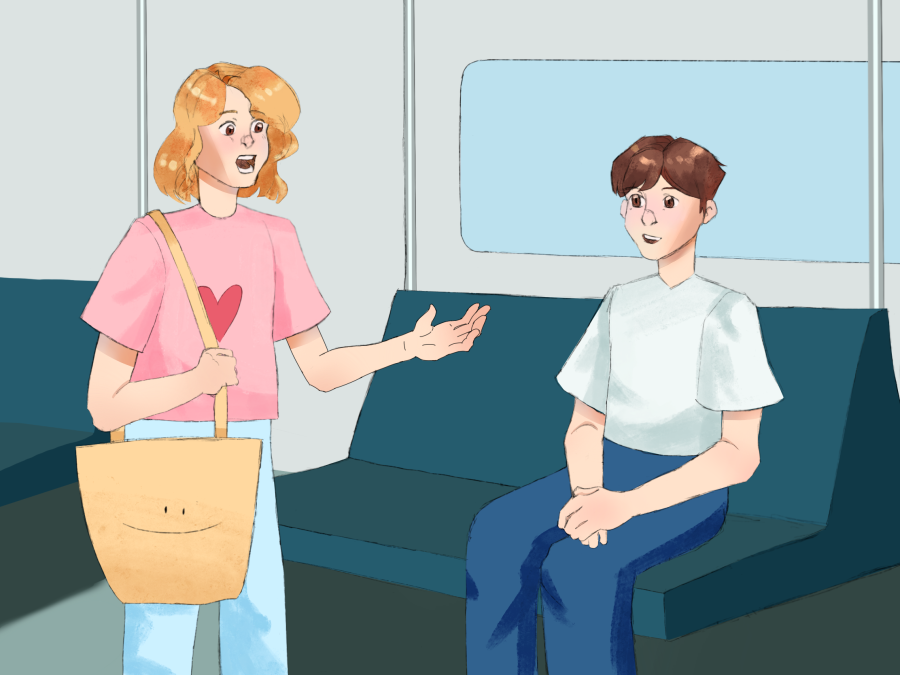With a devious smile forming on my face, I looked at my computer screen as plans started to form in my head. The Labor Day weekend seemed like the perfect opportunity to explore the open road and enjoy the beauty of nature on a camping trip, and I was doing just that — just with a different means of transportation than the four-wheeled automobile.
Instead of driving, I came up with the idea of attempting my first long-distance public transit trip, with the concession that I would provide text message updates to my family along the way and meet them at my destination.
While some of my friends have assumed that environmental concerns motivated me to ride transit, I want my experiences to demonstrate that public transit has more to offer than being “green.”
I, as a certified non-idealistic teenager, find the humorous, irrational and frustrating nature of public transit as its most appealing aspect. Transit provides one of the few opportunities in my life to strive not for perfection, grades or scores but instead to be foolish and embrace the wonders of delays and railroad single-tracking.
My itinerary for my trip was as follows: bike across the bay, ride the BART to Oakland, take the Amtrak Capitol Corridor train to Sacramento and ride a bus to South Lake Tahoe.
I started my journey by pumping my legs and chasing the sunrise to cross The Bay on my bicycle. However, as I would soon realize while standing in front of a gated community and scrambling through my phone to find Google Maps, navigating a perfect, memorized route proved to be harder than I anticipated.
Panting and shaking, I eventually arrived at my first destination, the Union City BART station in Fremont, with five minutes to spare but with a full dose of adrenaline.
Though commuter rail and the BART metro lines can rival driving times during rush hour traffic, railroad track maintenance meant that on this day, BART shut down trains between the Union City and South Hayward stations, instead requiring users to board a bus to cross the gap and adding half an hour in delays.
While I had anticipated trouble, 30 minutes of delays seemed a little too close to the less-than 35 minutes of buffer time I had allotted to make the next connection at Oakland.
Yet, with all my frantic pacing around the BART car and sprinting up the subway steps, I maintained my composure in what I regarded as a test for my future adulthood: dealing with situations I am unprepared for.
I could have easily saved four hours of my life and some considerable stress by driving, yet my perfect 16-year-old judgment and eagerness for adventure made me choose not to.
Pedaling as quickly as I could between the Lake Merritt and Oakland Jack London stations, a train appeared at the edge of my vision with its onboard plaque reading “Train #728 to Sacramento.” I was safe, albeit thanks to luck.
The next two legs of the journey, an Amtrak train to Sacramento and a thruway bus to South Lake Tahoe, proved to be less hectic. I parked my bicycle in the Amtrak passenger car, ordered a breakfast sandwich and stared out the window for a few minutes before collapsing onto the tray table in front of me.
As exhausted as I might have been, I regarded my sacrifices as worth my energy and a way to engage in the thrill of commuting rather than the destination.
Amtrak trains and long-distance buses offer the chance to make additional memories both from and beyond my trip to Tahoe. On a train to Fresno, I learned more details about college life from a Bakersfield graduate student.
I discovered the travails of running a local shop and the rise of standardized corporations at a more intimate angle by talking to a Puerto Rican named Charles on a bus in Houston. Chatting with other public transit riders helped me better understand the perspectives of people I normally might not meet.
While public transit in the United States struggles with on-time reliability, buses and select trains partially make up for the costs by providing complimentary Wi-Fi. Trains offer a smooth enough ride to study or read as well as onboard dining and restrooms that reduce the need for extra stops.
I typically buy coach seats even for multi-day travel because of my frugality and insistence on being economically self-sustainable. Although sleeping in trains and buses involved 11 p.m. attempts at ignoring chatty couples behind me, 3 a.m. supermarket restroom breaks and 6 a.m. wake-up times, I find my experiences more humorous than annoying Private rooms with beds and complimentary meals are also available onboard for anyone willing to spend the money.
Though I prefer walking and cycling for practical and economic reasons, public transit offers the allure of adventure and extends the range of places I can visit independently.
If anything, my grievances with public transit — delays, noise, missed and almost-missed connections — have made me more compelled to continue riding public transit for the memories I make along the way. Amtrak, in my opinion, is a better cruise on land that offers varied scenery and greater sustainability in a less-touristy environment.
I have exclusively walked, cycled and ridden public transit for almost a year, but I do not expect anyone to follow my actions nor do I encourage hate toward or vandalism against users of any mode of transportation, automobiles included.
Public transit is more of a useful tool than a panacea to every problem, a tool one can use for anything from bus commutes to school to long-distance travel for vacations. Whether you want to earn your independence without the hassles of a driver’s license, avoid traffic, ride a “self-driving” bus or train, save money, go on an irrational adventure or reduce your carbon footprint, public transit can bring something to anyone with an open mind.


